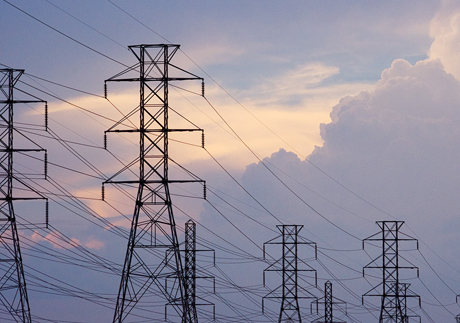nouvelles
Creating an AC-DC Converter: A Guide to Converting Alternating Current to Direct Current
Auteur: Module d'alimentation ZYG Time: 2023-4-12
If you work with electronics, you may find yourself needing to convert AC (alternating current) to DC (direct current) at some point. This can be done with a simple AC-DC converter circuit. In this guide, we walk you through the process of creating your own converter circuit.
First things first, let\ explain the difference between AC and DC. Alternating current is the kind of electricity that comes out of your wall socket. It oscillates back and forth, changing direction 50 or 60 times per second. Direct current, on the other hand, flows in one direction only. Most electronic devices require DC to function.
To create an AC-DC converter, you need a few basic components. These include a transformer, a diode bridge, and some capacitors. Let take a closer look at each of these.
The transformer is the first component in the circuit. Its job is to step down the voltage of the AC input to a lower level that can be handled by the diode bridge. The transformer consists of two coils of wire wound around an iron core. The input AC voltage is applied to one coil, while the output DC voltage is taken from the other coil.

The diode bridge is the second component in the circuit. It consists of four diodes arranged in a bridge configuration. The diodes allow current to flow in only one direction, effectively converting the AC input to DC output.
The capacitors are the final components in the circuit. They work to smooth out the DC output, removing any remaining AC ripple. Two capacitors are used in the circuit: a large electrolytic capacitor and a smaller ceramic capacitor.
Now that we understand the components, let take a look at the circuit diagram.
As you can see, the transformer is connected to the AC input, while the diode bridge and capacitors are connected to the DC output. The large electrolytic capacitor is connected in parallel to the DC output to smooth out the output voltage. The smaller ceramic capacitor is connected in parallel to the large capacitor to filter out any high frequency noise.
When you assembled the circuit, you can test it by connecting a voltmeter to the DC output. You should get a voltage that is slightly less than the voltage of the AC input. For example, if your AC input is 120 volts, your DC output should be around 110 volts.
In conclusion, creating an AC-DC converter is a simple process that can be accomplished with a few basic components. By following the steps outlined in this guide, you should be able to create your own converter circuit with ease.

Précédent: The Future of AC-DC Converter Factories: Trends and Technologies to Watch
Prochain: Titre : Comprendre les convertisseurs AC-DC : un guide pour débutants
les informations pertinentes
-
2023-6-10
24V AC to DC Converter: Transforming Alternating Current to Direct Current
The 24V AC to DC converter is a device that transforms alternating current (AC) into direct current (DC). This conversion is essential for many electronic devices that require a steady and reliable power supply. In this article, we will explore the details of this process and understand how this converter is used in various applications. Introduction AC is a type of electrical current that changes direction periodically. It is commonly used in households and industries for powering various electronic devices. However, most electronic devices require DC to function efficiently. This is because DC flows in one direction and is easier to control and regulate. Hence, the need for an AC to DC converter arises. The 24V AC to DC converter...
Voir les détails -
2023-5-15
An AC-DC converter for cars is a device that converts the alternating current (AC) from a car's electrical system into direct current (DC) that is suitable for powering electronic devices. Most modern cars have an AC electrical system designed to power the car's battery and accessories, such as the headlights, radio, and air conditioning system. However, electronic devices, such as mobile phones, tablets, and laptops, typically require a DC power source. The AC-DC converter for cars works by taking the AC voltage from the car's electrical system and converting it into a DC voltage that is suitable for powering electronic devices. The converter typically consists of a rectifier, a filter, and a voltage regulator. The rectifier converts the AC voltage...
Voir les détails -
2023-7-8
12V AC to DC Converter for LED: Efficiently Powering Your LED Lights
Introduction: In the realm of lighting technology, LED lights have gained immense popularity due to their energy efficiency, long lifespan, and versatility. However, to ensure optimal performance of LED lights, it is crucial to provide them with the right power source. This is where a 12V AC to DC converter plays a vital role. In this article, we will explore the significance of a 12V AC to DC converter for LED lights and how it efficiently powers them. Understanding the Basics: Before delving into the importance of a 12V AC to DC converter, let\'s first understand the basics of LED lights and their power requirements. LED stands for Light Emitting Diode, which is a semiconductor device that emits light when...
Voir les détails -
2023-5-24
Efficient 120V AC to 12V DC Converter for Your Electrical Needs
If you're in need of a reliable and efficient power source for your electrical devices, a 120V AC to 12V DC converter is an essential tool. Whether you're working on a DIY project at home, need power for your vehicle, or need a portable power source for camping or outdoor activities, a 120V AC to 12V DC converter can provide you with the power you need. At its most basic level, a 120V AC to 12V DC converter is a device that converts alternating current (AC) from a wall outlet into direct current (DC) that can be used to power electronic devices. The converter typically consists of a transformer, rectifier, and filter circuit, and is designed to be highly efficient...
Voir les détails -
2023-7-5
Bidirectional DC-DC Converter: An Efficient Solution for Power Conversion
Introduction: Power conversion plays a crucial role in various applications such as renewable energy systems, electric vehicles, and energy storage systems. The bidirectional DC-DC converter has emerged as an efficient solution for power conversion due to its ability to transfer power bidirectionally between two DC voltage sources. This article aims to explore the working principle, advantages, and applications of bidirectional DC-DC converters. Working Principle: A bidirectional DC-DC converter consists of two unidirectional converters, namely the buck converter and boost converter, connected back-to-back. The buck converter steps down the input voltage, while the boost converter steps up the voltage. These converters are controlled by a high-frequency switching mechanism that allows energy transfer bidirectionally. During the step-down mode, the buck converter operates...
Voir les détails -
2023-7-13
In today's digital age, electronic devices have become an integral part of our everyday lives. From smartphones and laptops to home appliances and industrial equipment, these devices rely on a stable and efficient power supply to function properly. This is where the SP Series AC/DC Converter comes into play, offering exceptional efficiency and reliability to power your electronics. The SP Series AC/DC Converter is a cutting-edge power conversion solution designed to convert alternating current (AC) to direct current (DC) efficiently and reliably. With its advanced technology and innovative features, this converter ensures a constant and stable power supply to your electronic devices, eliminating the risk of voltage fluctuations and power surges that could damage your precious gadgets. Efficiency is a...
Voir les détails


















